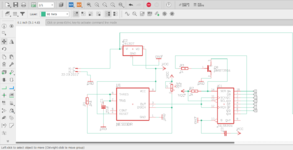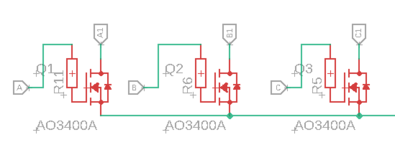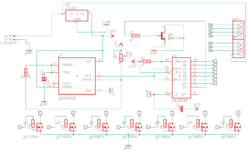Centerpoint
Newbie

i need help regarding ic 74hc595. i have a circuit like in the picture i included. the main problem is when i connect it to the 12v adapter, the output becomes out of sequence, this circuit should work turning on the output from Q0,Q1 to Q7.
some of the things I've done:
1. Provide a decoupling capacitor of 0.1uf and 1uf parallel placed at pins 16 and 8 on IC 74hc595.
2. provide a capacitor on the 7805 regulator according to the datasheet (0.33uf at input, 0.1uf at output)
3. add the RC circuit on pin 12 as in the article https://hstech.ro/HC595/
the load of this circuit is a neon flex lamp, the adapter used is 12v 5A. I have printed this circuit on the pcb.
can anyone give me advice so that the circuit can run normally.
some of the things I've done:
1. Provide a decoupling capacitor of 0.1uf and 1uf parallel placed at pins 16 and 8 on IC 74hc595.
2. provide a capacitor on the 7805 regulator according to the datasheet (0.33uf at input, 0.1uf at output)
3. add the RC circuit on pin 12 as in the article https://hstech.ro/HC595/
the load of this circuit is a neon flex lamp, the adapter used is 12v 5A. I have printed this circuit on the pcb.
can anyone give me advice so that the circuit can run normally.







